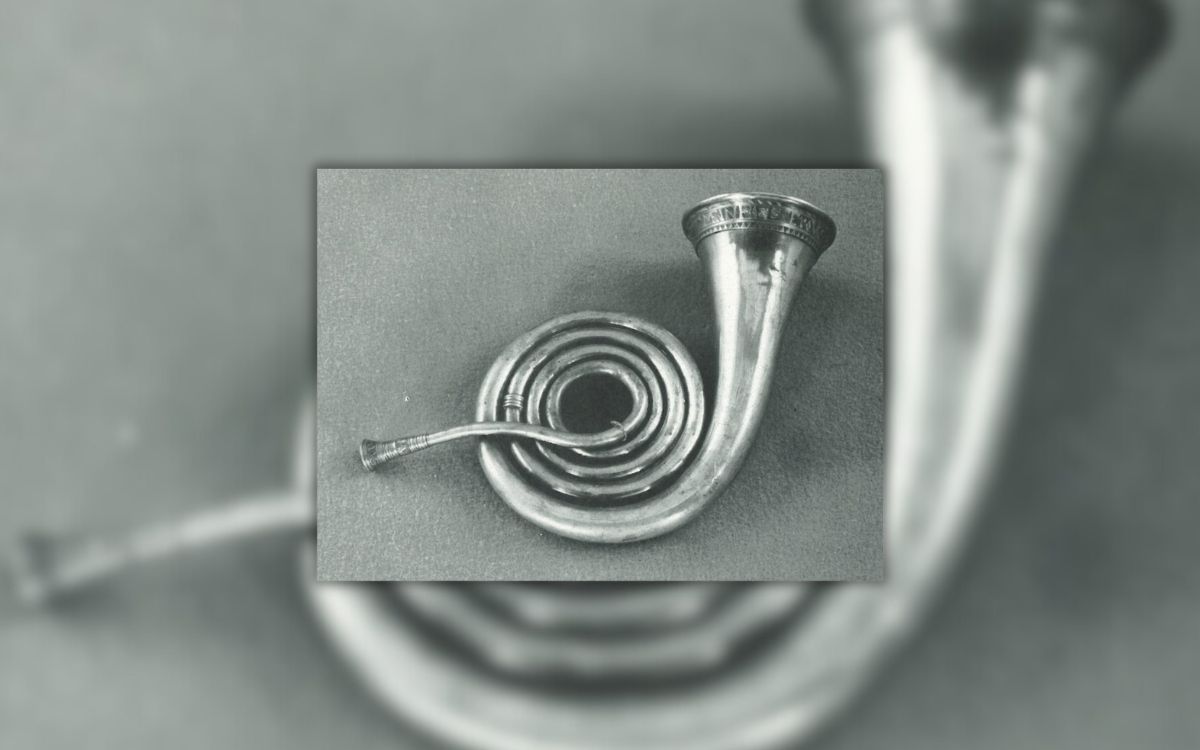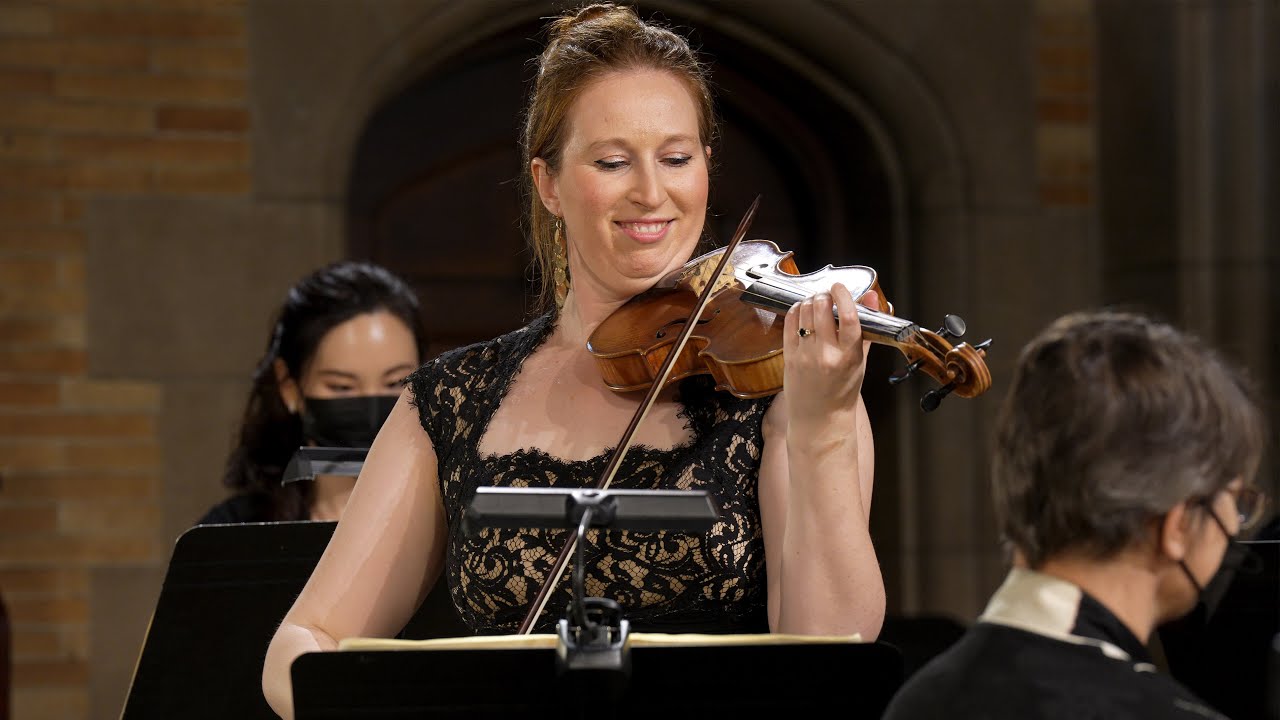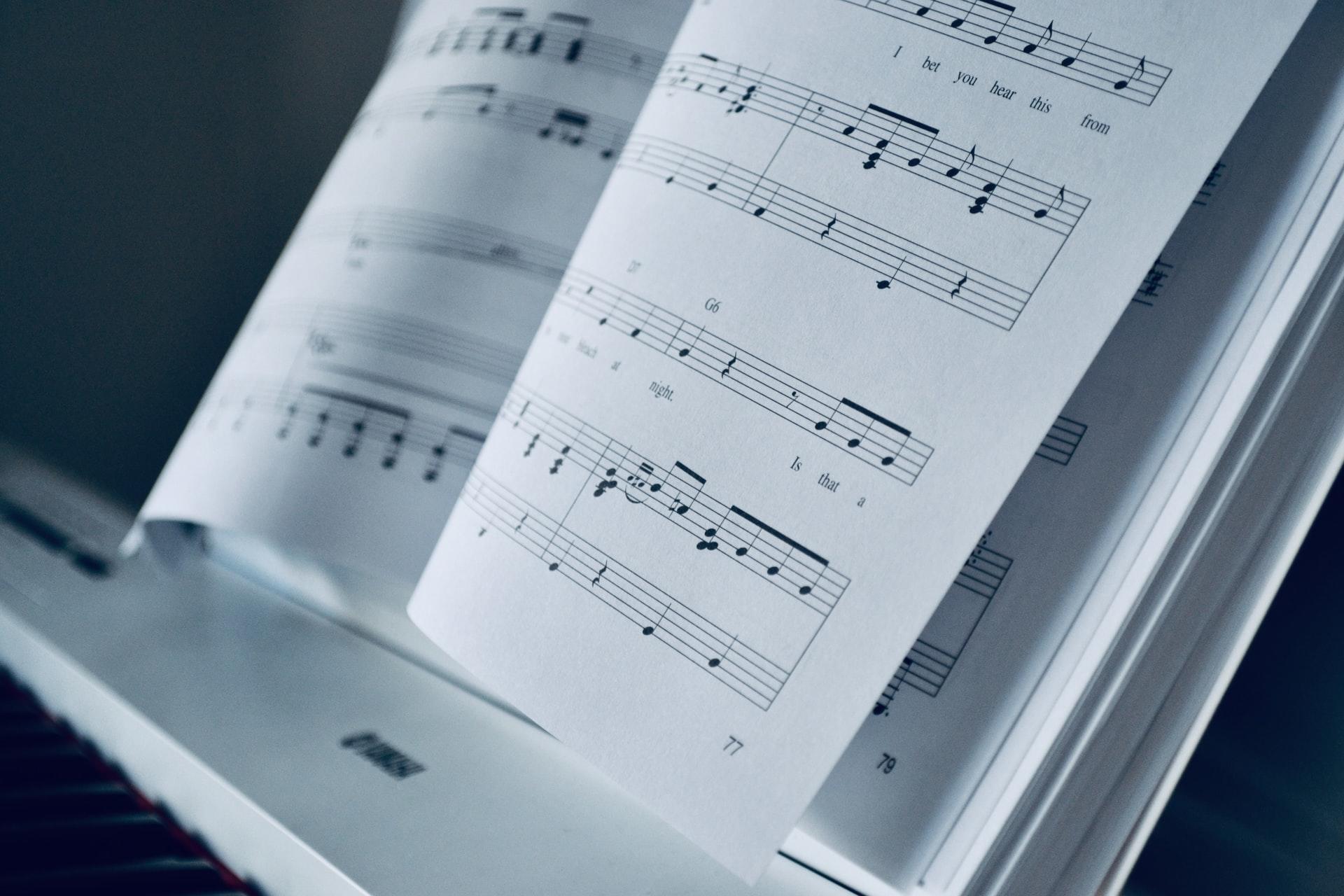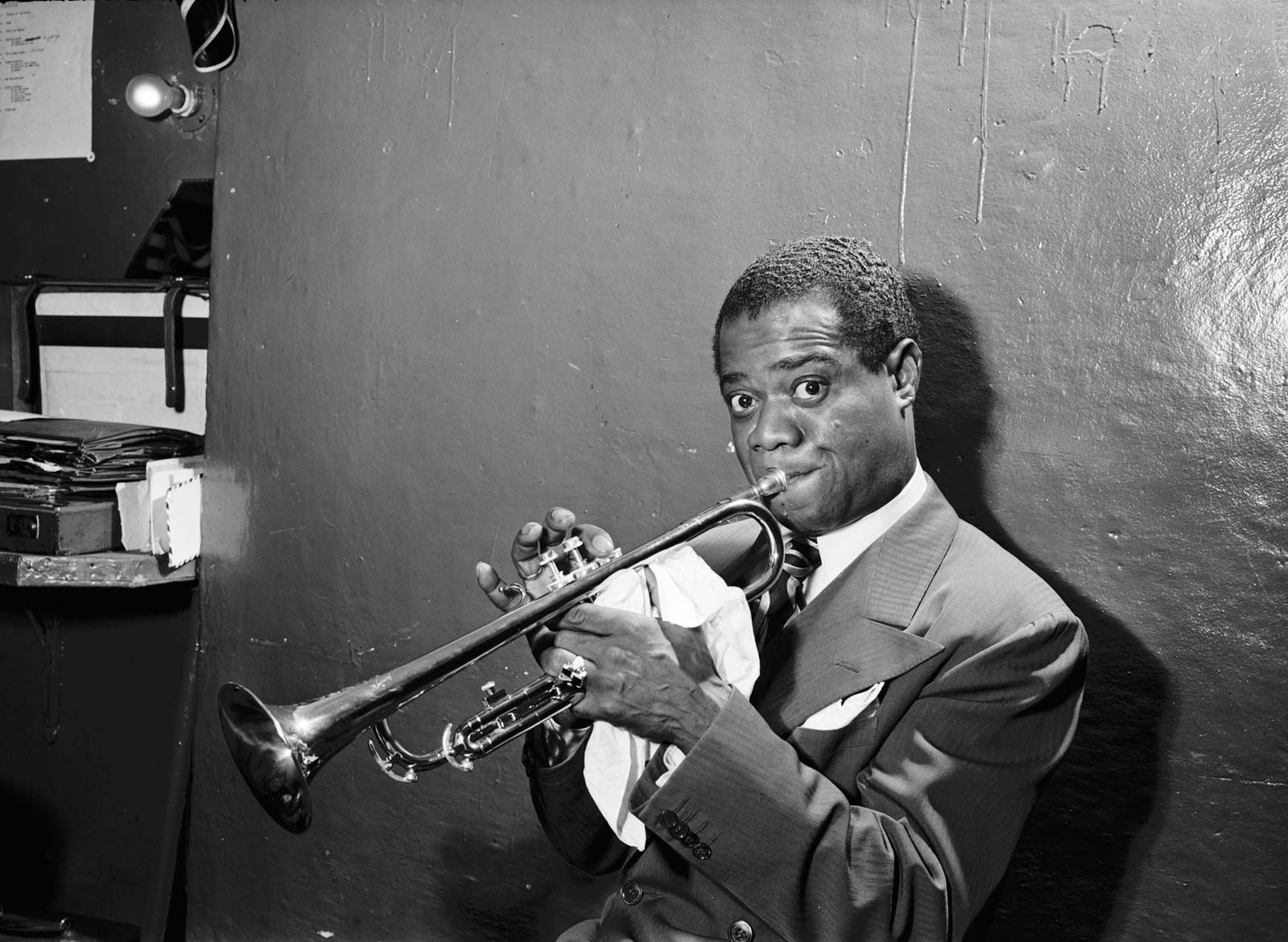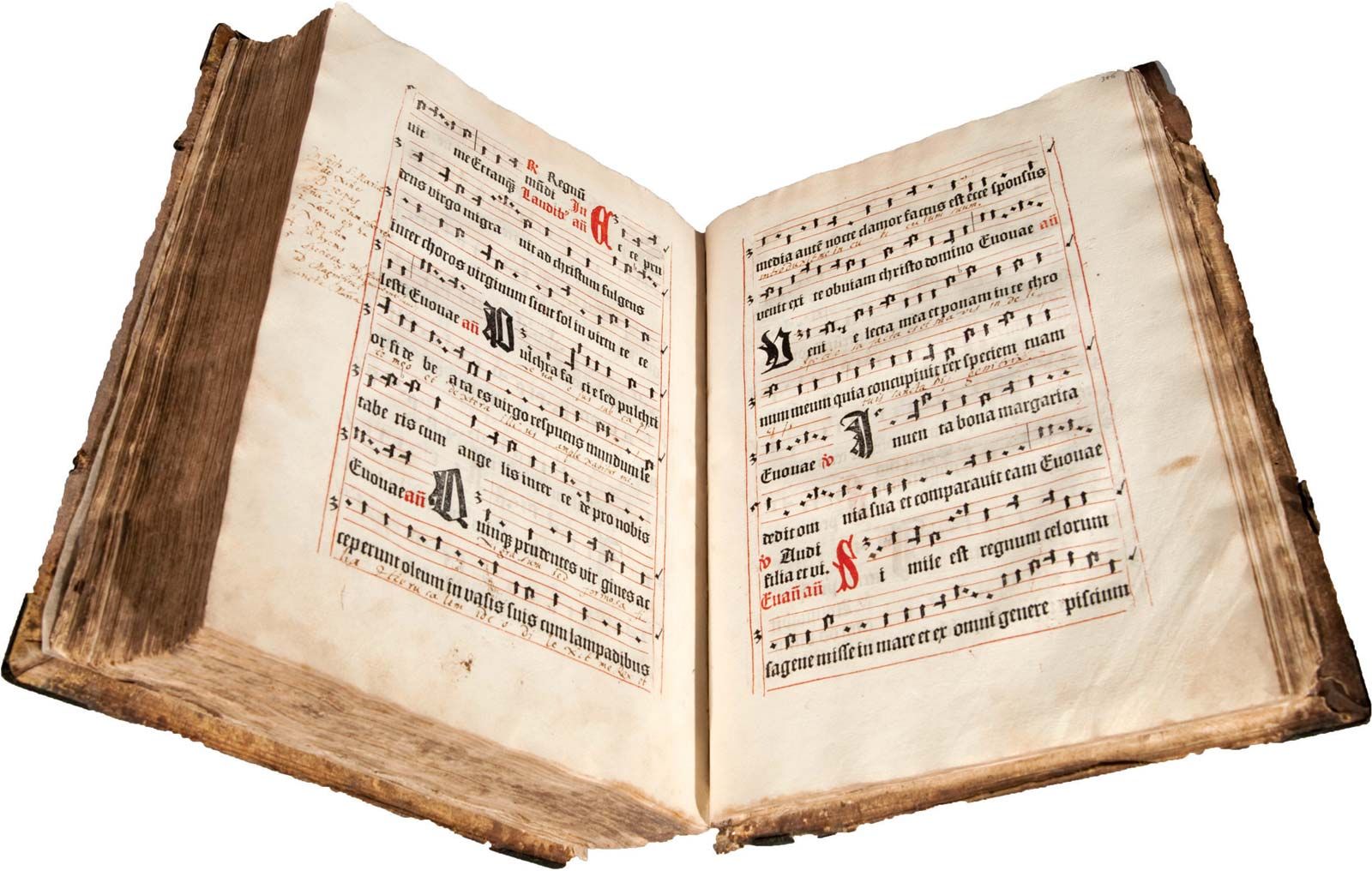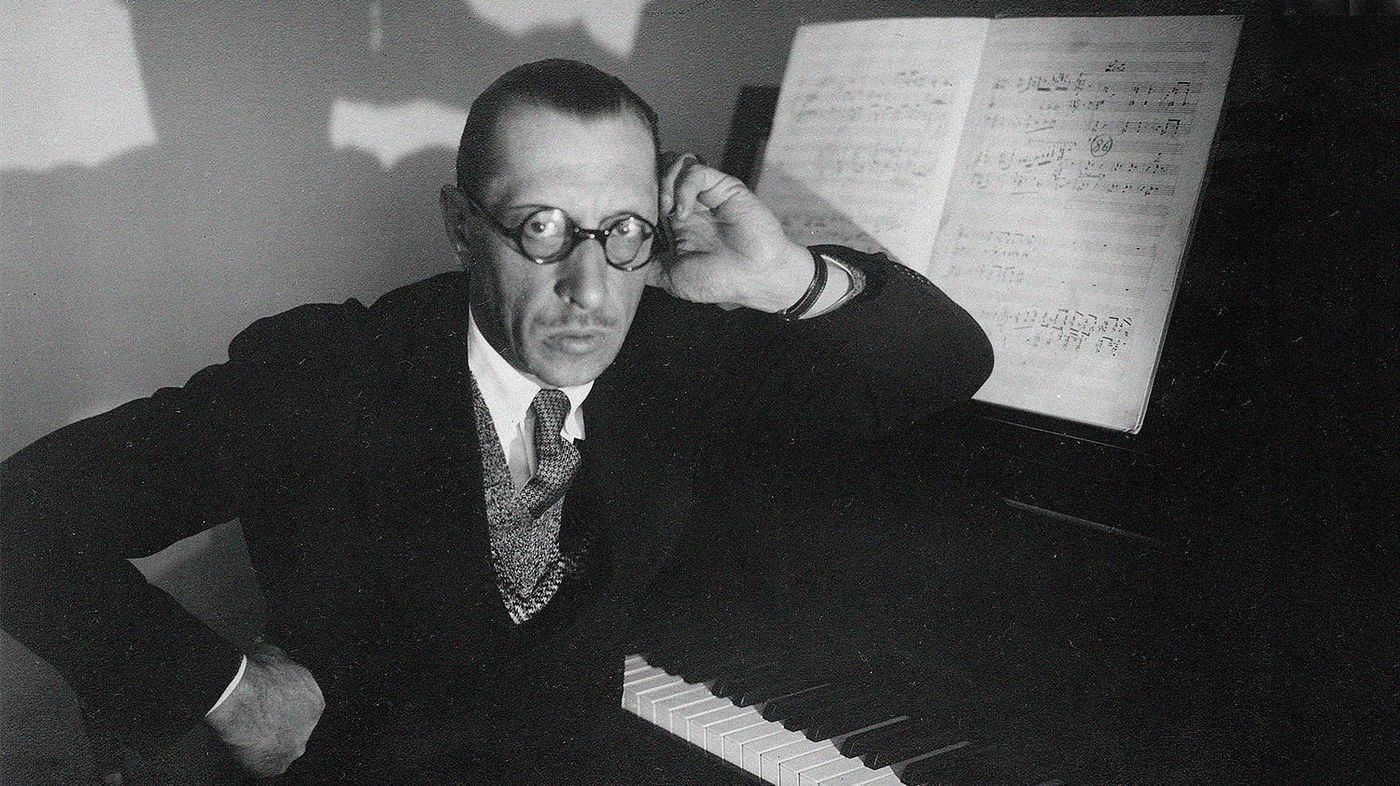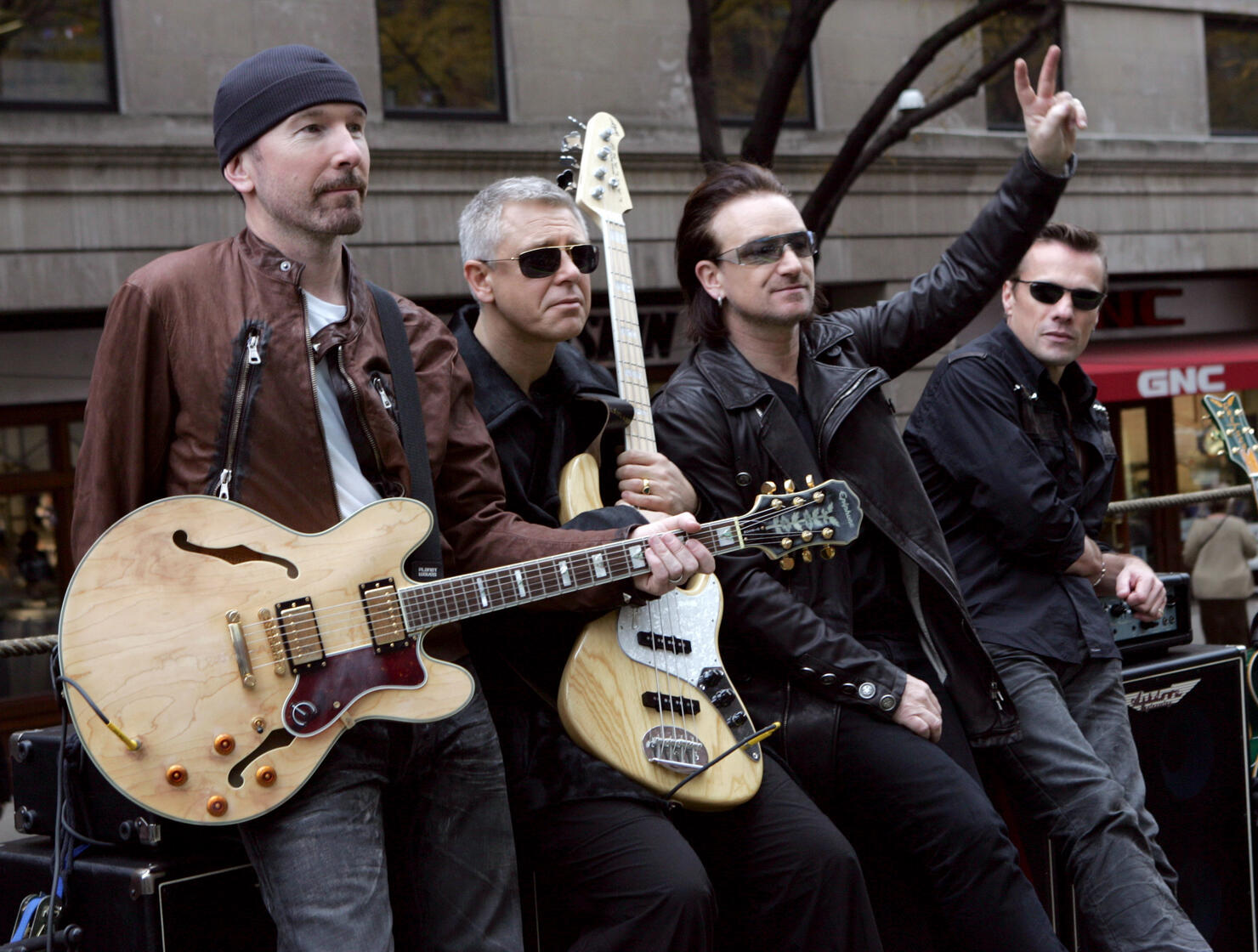Home>Events & Info>Music History>What Region Is Incredibly Important To Renaissance Music History?
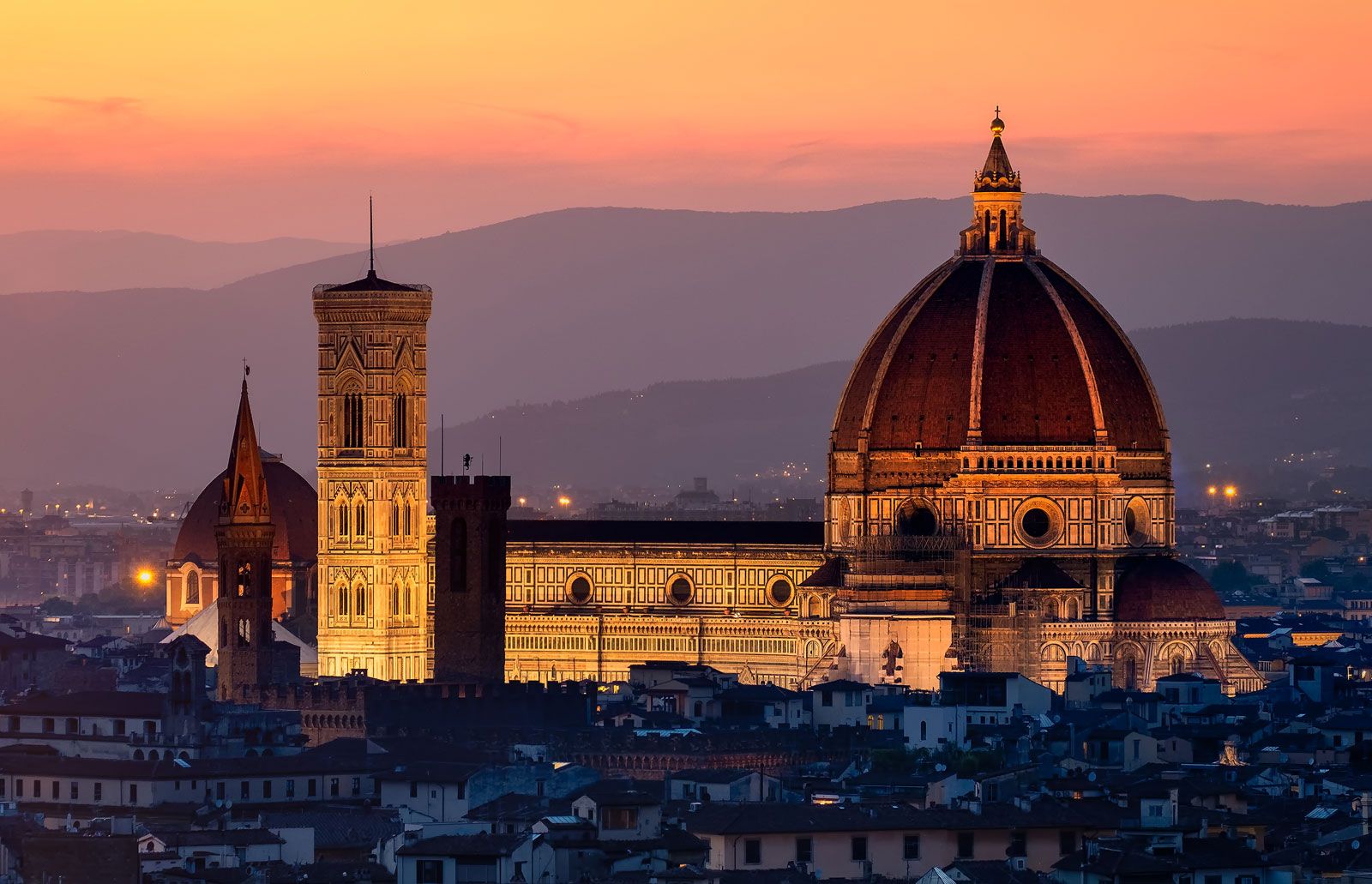

Music History
What Region Is Incredibly Important To Renaissance Music History?
Published: December 27, 2023
Discover the crucial region that played a significant role in the history of Renaissance music. Dive into the captivating world of music history and explore its impact.
(Many of the links in this article redirect to a specific reviewed product. Your purchase of these products through affiliate links helps to generate commission for AudioLover.com, at no extra cost. Learn more)
Table of Contents
Introduction
The Renaissance period, spanning roughly from the 14th to the 17th century, was a pivotal era in the history of music. This remarkable time witnessed a tremendous shift in musical composition, style, and technique, laying the foundation for the development of modern Western music. During the Renaissance, music evolved from simple melodies to complex harmonies and polyphony, and significant contributions were made by composers from various regions across Europe.
Understanding the regional variations and influences that shaped Renaissance music is crucial to comprehending its rich tapestry. The diverse cultural and political landscapes across different European nations during this period directly impacted the development and evolution of musical styles, techniques, and genres.
In this article, we will explore the musical landscapes of key regions during the Renaissance and highlight their significant contributions to the overall music history of that era. We will delve into the distinct styles, prominent composers, and unique characteristics that emerged from Italy, Flanders, England, Spain, and Germany.
Join us on this captivating journey through time, as we unravel the importance of regional variations in Renaissance music and discover the fascinating musical heritage that continues to enchant us to this day.
Overview of Renaissance Music
The Renaissance period marked a significant shift in the musical landscape. It was a time of great artistic and cultural advancements, characterized by a renewed interest in humanism, scientific discoveries, and exploration. Music, too, underwent a radical transformation during this period.
Unlike the monophonic chants of the Middle Ages, Renaissance music emphasized polyphony, the art of combining multiple melodic lines. Composers explored complex harmonies, counterpoint, and intricate vocal and instrumental arrangements. This era saw the rise of secular music, alongside religious compositions, as humanist ideals and the patronage of wealthy aristocrats supported the development of new musical forms.
The key characteristics of Renaissance music include balance, proportion, and clarity. Compositions featured smooth, flowing melodies and a harmonious blending of voices or instruments. The texts became more important, with composers paying close attention to word painting, in which the music reflects the meaning of the lyrics.
Some of the prominent genres of Renaissance music include madrigals, chansons, motets, masses, and dances. Madrigals were popular secular vocal pieces that expressed a wide range of emotions through their expressive melodies. Chansons were French songs, often in polyphonic form, while motets were religious vocal compositions.
Instrumental music also flourished during the Renaissance, with the emergence of new instruments like the lute, viol, and keyboard instruments. Composers such as John Dowland, William Byrd, and Claudio Monteverdi pushed the boundaries of music and left a lasting impact on future generations of composers.
Overall, the Renaissance period witnessed a remarkable expansion of musical horizons. The exploration of polyphony, the evolution of new musical forms and genres, and the increasing emphasis on secular music laid the foundation for the development of Western music as we know it today.
The Importance of Regional Variations
One of the fascinating aspects of Renaissance music is the significant role of regional variations in shaping its development and evolution. Different countries and regions in Europe had distinct musical traditions, cultural influences, and contributions that left an indelible mark on the overall music landscape of the time.
Regional variations in Renaissance music were not merely influenced by geography and cultural practices but were also shaped by political and religious factors. The patronage of powerful rulers and wealthy aristocrats played a crucial role in fostering musical innovation and attracting talented composers to specific regions.
Exploring the regional variations provides us with a deeper understanding of the diversity and richness of Renaissance music. It allows us to appreciate the unique styles, techniques, and innovations that emerged from different corners of Europe during this remarkable era.
Furthermore, the regional variations in Renaissance music reflect the broader socio-cultural and historical context of each region. Music became a medium through which political, religious, and cultural aspirations were expressed, and the distinct musical traditions served as a reflection of the artistic identity and heritage of each region.
By studying the regional variations, we can also appreciate the interconnectedness and exchange of musical ideas and influences. Composers often traveled, learned from one another, and incorporated different musical techniques into their compositions. As such, the regional variations in Renaissance music not only highlight diversity but also underscore the universal elements that connect musical traditions across different regions.
In the following sections, we will delve into the musical landscapes of key regions during the Renaissance, exploring the unique contributions and characteristics of Italy, Flanders, England, Spain, and Germany. Each of these regions holds significant importance in the history of Renaissance music, contributing to its growth and leaving behind a lasting musical legacy.
The Renaissance Music Scene in Italy
Italy was the birthplace of the Renaissance, and its influence on music during this period cannot be overstated. The thriving artistic and cultural climate of Italian city-states such as Florence, Rome, and Venice created the perfect breeding ground for musical innovation and creativity.
One of the defining characteristics of Italian Renaissance music was its emphasis on humanism and the celebration of the individual. Composers like Giovanni Palestrina, Claudio Monteverdi, and Josquin des Prez embraced the ideals of humanism and sought to express the depth of emotion and beauty through their compositions.
Italian composers were at the forefront of polyphonic music, employing complex harmonies and intricate contrapuntal techniques. They experimented with new genres and forms, including the madrigal, which became immensely popular during the Renaissance. The madrigal, a secular vocal composition, featured expressive melodies and rich harmonies, often exploring themes of love, nature, and human emotions.
Italy also played a significant role in the development of opera, an art form that combined music, drama, and spectacle. The Florentine Camerata, a group of intellectuals and musicians, pioneered the concept of opera in their quest to recreate the musical style of ancient Greece. Composers such as Monteverdi further advanced the genre, creating emotionally charged works that revolutionized the world of music.
Notable composers from other regions were drawn to Italy to study and absorb the rich musical culture. This influx of talent further fueled the vibrant music scene in Italy, leading to a constant exchange of ideas and innovations.
Furthermore, the patronage of wealthy Italian families and the Catholic Church played a vital role in supporting the arts and providing opportunities for composers and musicians to flourish. Music was an integral part of religious ceremonies and celebrations, leading to the composition of magnificent masses and motets that showcased the splendor of Italian Renaissance music.
Italian music of the Renaissance continues to inspire and captivate audiences to this day. Its emphasis on beauty, passion, and profound emotion permeates through each composition, reminding us of the incredible legacy left behind by Italian composers during this remarkable period.
The Role of Flanders in Renaissance Music
Flanders, a region encompassing present-day Belgium, the Netherlands, and parts of France, played a pivotal role in the development of Renaissance music. This culturally rich and politically influential area served as a hub for innovation, attracting talented composers and musicians from across Europe.
Flemish composers, renowned for their mastery of polyphony, made significant contributions to the musical landscape of the Renaissance. One of the most notable composers from Flanders was Josquin des Prez, often referred to as the “master of the notes.” Josquin’s compositions, such as his masses and motets, showcased impeccable craftsmanship and a refined sense of polyphonic writing.
Another prominent figure from Flanders was Guillaume Dufay, who bridged the gap between the medieval and Renaissance periods with his compositions. Dufay’s works exemplified the blending of the old and the new, incorporating elements of medieval music while embracing the emerging styles and techniques of the Renaissance.
Flanders was known for its thriving music culture and the presence of prominent musical institutions and chapels. The Burgundian Court, with its opulent patronage, attracted composers and musicians to Flanders, fostering an environment of creativity and artistic expression.
Flemish composers were celebrated for their masterful use of imitation, elaborate counterpoint, and vivid harmonic progressions. Their compositions were often characterized by a rich and sonorous sound, achieved through the intricate interweaving of multiple vocal lines.
Furthermore, the influence of Flemish music extended beyond the borders of Flanders. The reputation of Flemish composers and their compositions spread throughout Europe, inspiring musicians in other regions to adopt and adapt their techniques. Flemish musical influence can be seen in the works of Italian composers such as Giovanni Gabrieli and Palestrina, who incorporated Flemish compositional techniques into their own compositions.
Flanders’ musical legacy in the Renaissance period serves as a testament to the region’s artistic prowess and cultural significance. The composers of Flanders left an indelible mark on the music of the time, contributing to the overall development of Renaissance music and influencing generations of musicians and composers to come.
Contributions from England to Renaissance Music
England, with its vibrant musical culture and rich history, made significant contributions to Renaissance music. Despite its relative isolation from the rest of Europe during this period, England developed a distinctive musical style that blended elements of continental music with its own unique traditions.
One of the key figures in English Renaissance music was Thomas Tallis. He was renowned for his sacred vocal compositions, including intricate polyphonic works such as his famous motet “Spem in alium.” Tallis’s music embodied the characteristics of English Renaissance music, with its soaring melodies, lush harmonies, and attention to textual expression.
Another prominent English composer was William Byrd. Known for his mastery of both sacred and secular music, Byrd’s compositions showcased his intricate contrapuntal writing and profound emotional depth. His sacred music, such as his masses and motets, demonstrated a distinct English style while incorporating elements of continental polyphony.
During the Renaissance, English composers also embraced the development of secular music genres such as the madrigal. Though the madrigal originated in Italy, English composers like Thomas Morley and John Wilbye created their own unique variations of the genre. These English madrigals often featured lighter and more lively melodies, reflecting the cultural tastes and preferences of the time.
The musical landscape of England during the Renaissance was also heavily influenced by the Tudor monarchy. Queen Elizabeth I, an avid patron of the arts, played a significant role in promoting and nurturing music in the country. The flourishing court of Elizabeth I attracted talented musicians and composers, leading to a vibrant musical scene.
Furthermore, the English Reformation, which separated England from the Roman Catholic Church, had a profound impact on the music of the period. English composers adapted to the new religious climate, producing compositions for the newly established Church of England. These compositions, known as Anglican church music, including anthems and choral settings, became an integral part of the Anglican choral tradition and continue to be sung in churches today.
English Renaissance music stands out for its distinctive style and contributions to the overall musical landscape of the era. The fusion of continental influences with native traditions, the excellence of composers like Tallis and Byrd, as well as the influential role of the Tudor monarchy, all played a part in shaping the unique musical heritage of England during the Renaissance.
The Influence of Spain in Renaissance Music
Spain, with its rich cultural heritage and diverse musical traditions, had a significant influence on the development of Renaissance music. Known for its vibrant court culture, religious fervor, and exploration of new territories, Spain played a crucial role in shaping the musical landscape of the era.
During the Renaissance, music in Spain was deeply intertwined with both the Catholic Church and the royal court. The Catholic monarchs, Ferdinand and Isabella, who sponsored Christopher Columbus’s voyages, were enthusiastic patrons of the arts and music. The Spanish court became a center of cultural and artistic exchange, attracting renowned composers, performers, and scholars.
One of the notable contributions of Spain to Renaissance music was the development of the villancico. This secular vocal genre, characterized by its lively rhythms and catchy melodies, reflected the mixing of Spanish folk music and Moorish influences. The villancico gained popularity throughout Europe, showcasing the Spanish musical style and exuberant spirit.
Religious music also thrived in Spain during the Renaissance. Spanish composers, such as Tomás Luis de Victoria and Cristóbal de Morales, composed profound and emotionally charged sacred music. Their compositions, including masses and motets, were deeply influenced by Spanish mysticism and expressed the religious fervor of the time.
Spain’s exploration and colonization of the New World also had a significant impact on Renaissance music. The encounter with indigenous music of the Americas and African rhythms brought new elements and influences into Spanish music. This fusion of diverse musical traditions contributed to the development of uniquely Spanish musical styles, such as the ensalada, a genre that incorporated different languages and musical forms.
Moreover, the presence of Spanish composers and musicians in other European courts spread the influence of Spanish music across the continent. Spanish musicians, trained in the rich musical traditions of their homeland, became sought-after performers and composers, further promoting the Spanish musical style.
The influence of Spain in Renaissance music cannot be underestimated. The vibrant court culture, exploration of new territories, and the blending of diverse musical traditions all played a role in shaping the unique musical heritage of Spain during this period. The contributions of Spanish composers continue to be celebrated, their works reflecting the rich cultural tapestry and artistic splendor of Renaissance Spain.
The Impact of Germany on Renaissance Music
Germany, with its deep-rooted musical traditions and thriving cultural centers, had a significant impact on the development of Renaissance music. The country’s rich musical heritage, renowned composers, and strong patronage contributed to the growth and innovation of music during this period.
One of the most influential German composers of the Renaissance was Johann Sebastian Bach. Although Bach is primarily associated with the Baroque era, his works bridge the gap between the Renaissance and Baroque periods. His contrapuntal masterpieces, such as the “Mass in B Minor” and the “Art of Fugue,” showcase incredible craftsmanship and push the boundaries of musical expression.
Germany was also home to renowned composers such as Heinrich Isaac, Hans Leo Hassler, and Michael Praetorius, who made significant contributions to Renaissance music. These composers embraced the polyphonic style and sought to create harmonically rich and emotionally expressive compositions.
Furthermore, Germany’s thriving musical centers, such as Leipzig and Nuremberg, fostered a vibrant music scene and attracted talented musicians from across Europe. The presence of prestigious institutions, churches, and courts provided ample opportunities for composers and musicians to showcase their skills and experiment with new musical forms.
One of the defining characteristics of German Renaissance music was the importance placed on chorale music. Chorales, hymn-like melodies accompanied by harmonies, became a cornerstone of German musical tradition. Composers like Martin Luther and Johann Walter played a significant role in promoting congregational singing and the development of chorale-based compositions.
The Protestant Reformation, led by Martin Luther, also had a profound influence on German music. Luther’s belief in congregational participation in worship led to the creation of German-language hymns, which were accessible to the masses. These hymns, often set to simple and memorable melodies, became an important part of German religious and musical culture.
Germany’s impact on Renaissance music extended beyond its borders. The country served as a hub for music publishing and dissemination, with important publishing houses located in cities like Augsburg and Nuremberg. The widespread availability of printed music allowed composers’ works to reach a broader audience and further disseminate German musical styles and innovations.
The contributions of Germany to Renaissance music were vast and multifaceted. The country’s rich musical heritage, prominent composers, emphasis on chorale music, and the influence of the Protestant Reformation all played a role in shaping the unique musical traditions of Germany and helping to pave the way for future developments in Western music.
Conclusion
The Renaissance period stands as a remarkable chapter in the history of music. It witnessed a profound transformation in musical composition, style, and technique, leaving an enduring legacy that continues to captivate audiences today. The importance of regional variations in Renaissance music cannot be overstated, as different countries and regions in Europe shaped the development and evolution of musical styles, techniques, and genres.
Italy, with its vibrant artistic and cultural climate, gave birth to the Renaissance and made significant contributions to music during this era. Italian composers like Palestrina and Monteverdi embraced polyphony and experimented with new genres, leaving an indelible mark on the overall music landscape. Flanders, known for its mastery of polyphony, produced renowned composers like Josquin des Prez and Guillaume Dufay, who brought intricate harmonies and elaborate counterpoint to the forefront.
England, despite its isolation, developed a distinctive style of Renaissance music. Composers like Tallis and Byrd created masterpieces that blended continental influences with their own unique traditions. Spain played a crucial role in shaping the musical landscape through its vibrant court culture, religious fervor, and exploration. Spanish composers infused their music with a mix of Spanish folk melodies and Moorish influences, creating distinctive compositions that exuded passion and emotion.
Germany’s impact on Renaissance music was profound, with composers like Johann Sebastian Bach pushing the boundaries of musical expression. The importance placed on chorale music and the influence of the Protestant Reformation contributed to the development of German musical traditions.
In conclusion, the regional variations in Renaissance music showcase the diversity, richness, and interconnectedness of musical traditions across Europe during this incredible period. Each region contributed its own unique characteristics, influences, and innovations, enriching the musical landscape and leaving behind a legacy that continues to inspire and captivate audiences to this day.
As we explore and celebrate the regional variations in Renaissance music, we gain a deeper appreciation for the beauty, complexity, and significance of this transformative era in the history of music.


